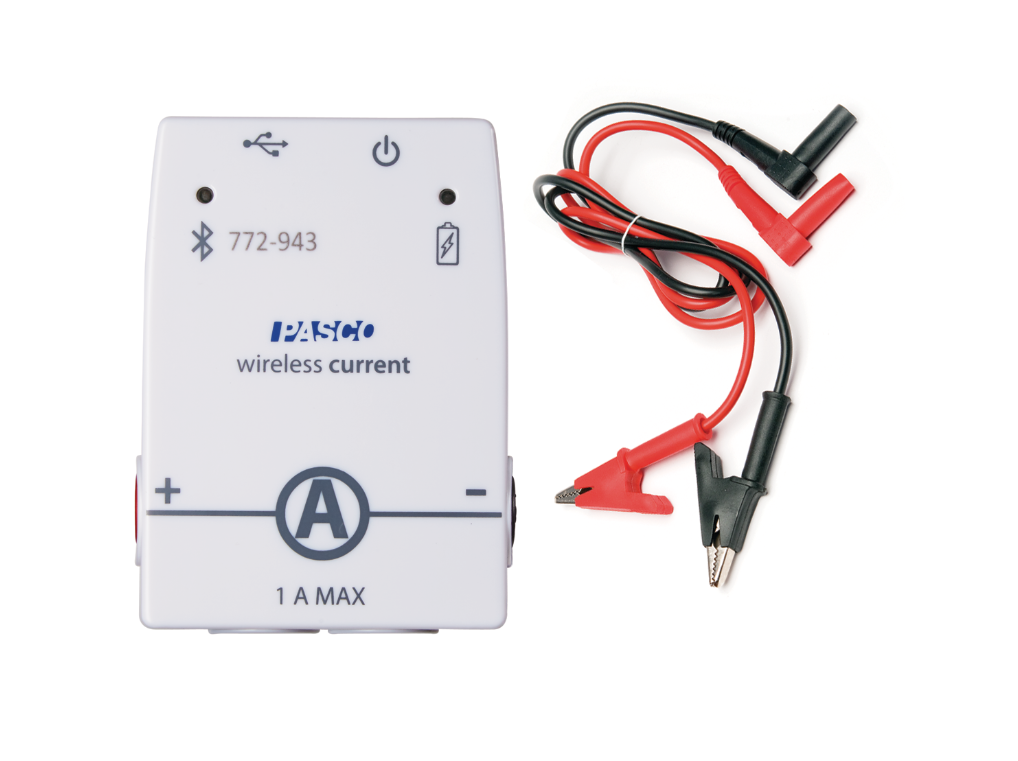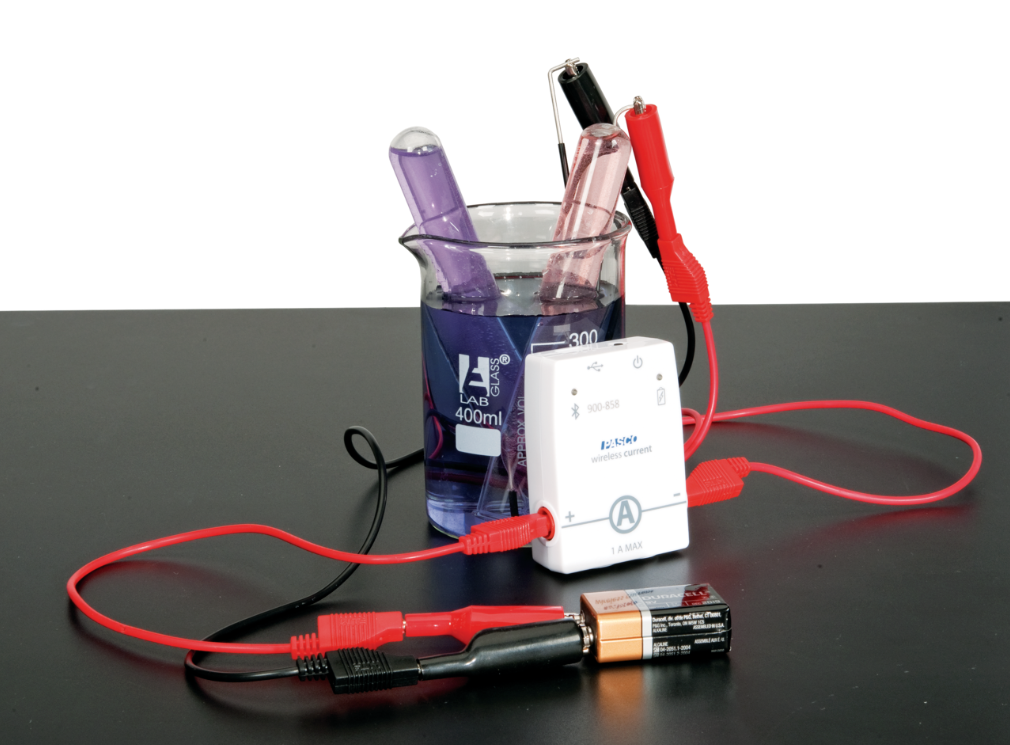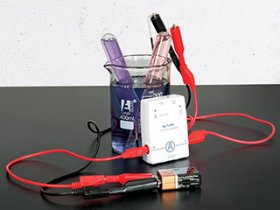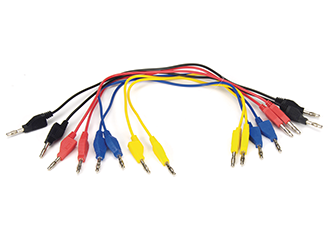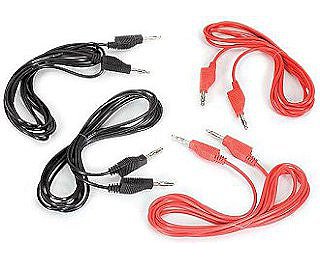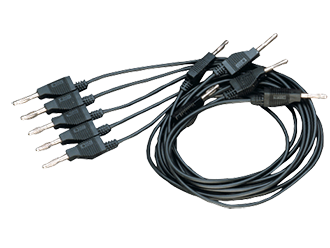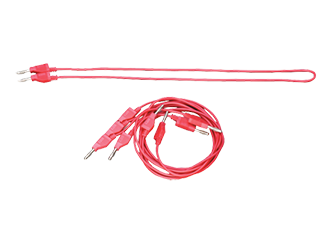Description
The Wireless Current Sensor’s wide current range enables introductory and advanced explorations of the fundamental concepts of electricity and basic circuits. Designed with user safety in mind, the sensor can be used to measure currents up to 1 A and includes built-in overload protection. Collected data can be wirelessly transmitted to computers, Chromebooks, tablets, and smartphones. When combined with a Wireless Voltage Sensor, students can explore Ohm’s Law, series and parallel circuits, and much more.
Since current can only exist in a complete circuit, the Wireless Current Sensor must be part of that circuit to measure current. It is connected in series and has a very low resistance (0.1 Ω). For this reason, we do not recommend connecting it directly across a battery or other voltage source without a resistive load.
Current sensors in chemistry enable students to count electrons involved in driving reactions much like a scale accounts for mass in reactions. Amperage determines how many atoms are involved in a chemical reaction. Since the two are related, current can be used to find out how much reactant is available in solution. Integrating currents keeps track of how much metal might electroplate onto an electrode.
Features
- Two Ranges: ±1.0A and ±0.1A
- Resolution: 0.2mA at ±1A range and 0.02mA at ±0.1A range
- Bluetooth® sampling rate of 1.0 kHz
- High-speed sampling via USB
- Remote logging
- Variable sampling rate for recording small, fast changes or experiments that run for hours, days, or weeks
Applications
- Current flow in series and parallel circuits
- Kirchhoff’s Current Law
- Current flow in electrolysis reactions
Experiments
Perform the following experiments and more with the Wireless Current Sensor.
Visit PASCO’s Experiment Library to view all activities for this product.
What’s Included
- 1x USB Cable
- 1x Red, Banana-to-alligator-clip
- 1x Black, Banana-to-alligator-clip
- 1x Wireless Current Sensor
Product Specifications
| High Setting Range | ±1 A |
| Low Setting Range | ±0.1 A |
| Resolution | 0.2mA (±1A range); 0.02mA (±0.1A range) |
| Maximum Sampling Rate (Bluetooth) | 1000 Hz |
| Maximum Sampling Rate (USB) | 100 kHz |
| Input Resistance | 0.1 Ω |
Battery & Logging
| Stored Data Points Memory (Logging) 1 | >55,000 |
| Battery – Connected (Data Collection Mode) 2 | >90 hr |
| Battery – Logging (Data Logging Mode) 3 | 13 days |
| Battery Type | LiPo |
1 Minimum # of data points with all measurements enabled, actual results depend on enabled measurements.
2 Continuous use in a connected state until battery failure, actual results will depend on sample rate, active measurements, and battery condition.
3 Logging until battery failure, actual results will depend on sample rate, active measurements, and battery condition.
* Normal classroom use is the sensor in active use for 20min/lab for 120 lab periods/yr.
Product Guide
Select The Right Voltage & Current Sensor
Educational voltage and current sensors don’t have to look serious to have seriously powerful capabilities. We provide user-friendly voltage and current sensors that generate live data to improve students’ contextual understanding of electrical concepts. This page provides a comparison chart of our offerings to help you make an informed purchase.
Replacement Parts
| Shrouded Alligator Test Leads | PS-3544 |
Also Available
| Single Port USB Wall Charger | PS-2575A | |
| Wireless Sensor Charging Station | PS-3599 | |
| Storage Tray for Wireless Voltage & Current Sensor | PS-3588 | |
| USB Bluetooth Adapter | PS-3500 |

